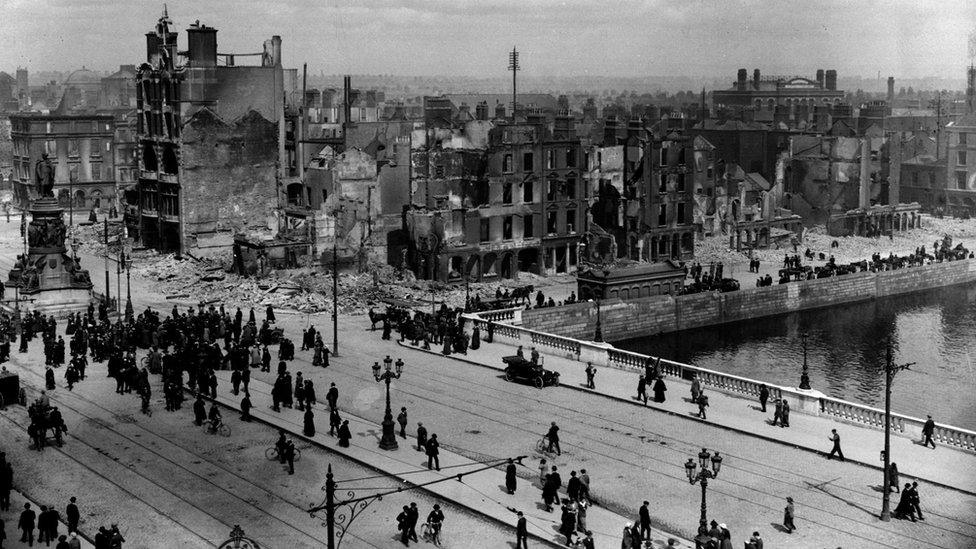Easter Rising: Centenary parade takes place in Dublin
- Published
Hundreds of thousands of people turned out to watch the Easter Rising commemorations in Dublin.
Hundreds of thousands of people have lined the streets of Dublin where a parade has marked the 100th anniversary of the 1916 Easter Rising.
The military parade was the largest ever staged in the Republic of Ireland, and featured a fly-past over the city centre by the Irish Air Corps.
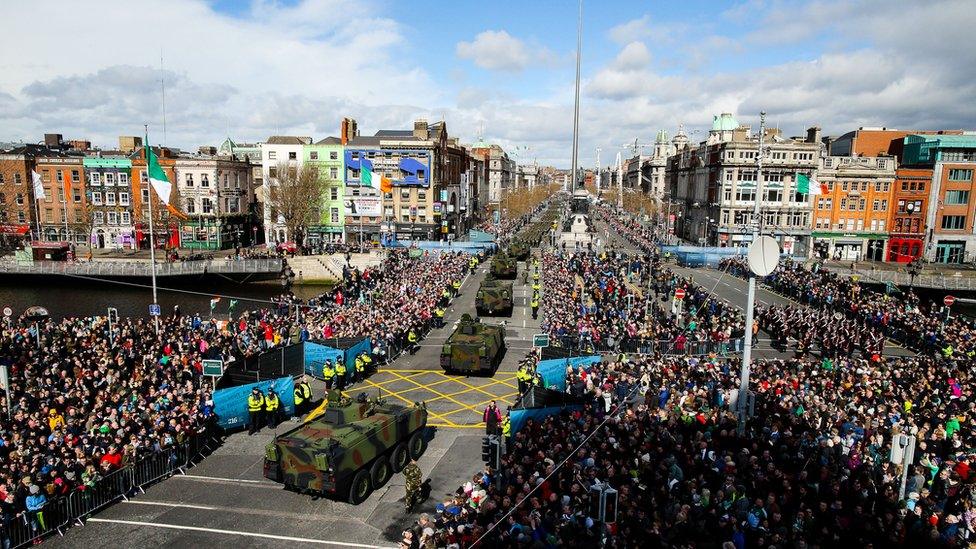
Spectators lined Dublin's streets of for the largest military parade ever staged in the history of the Republic of Ireland
The 1916 rebellion was an attempt to overthrow British rule in Ireland.
Sunday's ceremony was the culmination of a series of centenary commemorations organised by the Irish government.
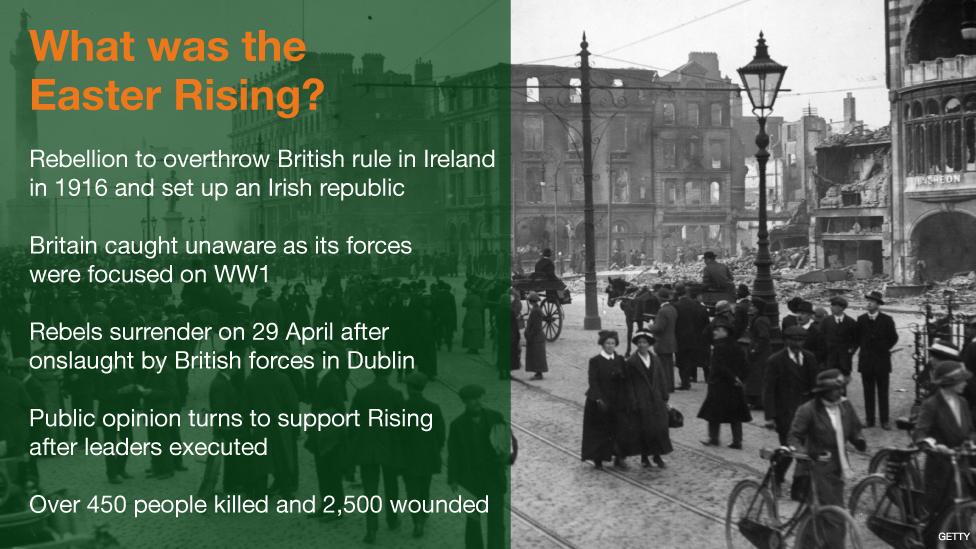
The 1916 Proclamation of Irish Independence was read outside the GPO in O'Connell Street
Irish President Michael D Higgins led the main ceremony on O'Connell Street as the Irish tricolour was lowered at the General Post Office (GPO), the building that was once the rebels' headquarters.
The 1916 Proclamation was then read out by an officer from the Irish defence forces, in a re-enactment of the declaration of independence the rebels made outside the GPO on 24 April 1916.

From the scene - BBC News NI's Mark Simpson
It is a rare moment in a large crowd when everyone puts down their smart phone and just listens.
That rarity occurred when Captain Peter Kelleher, a soldier from Cork, re-read the 1916 proclamation of Irish independence.
Social media went on hold in the crowd. The 'selfies' stopped. There was a Twitter ceasefire.

Michael D Higgins lays a wreath at Kilmainham Gaol on behalf of the people of Ireland
The president laid a laurel wreath in front of the building before a minute's silence was observed in tribute to the dead.
The Last Post was played, followed by the Irish national anthem Amhrán na bhFiann (The Soldier's Song) and the tricolour was raised back up to full mast above the GPO.

Among those at the parade was Sheila O'Leary, 94, whose father fought at the GPO in 1916
The military fly-past was greeted with cheers and applause from the crowds who thronged the streets.
Earlier, President Higgins also laid a wreath at Kilmainham Gaol, where 14 of the 16 leaders of the Easter Rising were executed by British troops.
The Irish Air Corps perform a flypast as the ceremony at the GPO concludes
The manner of their deaths is seen by many historians as instrumental in changing public opinion in Ireland in 1916 - which was initially hostile to the rebellion - into sympathy and support for the republican push for independence.
Acting Taoiseach (Prime Minister) Enda Kenny also played a leading role in Sunday's commemorations and said it was "important that we bear witness this centenary year to all those who gave their lives during Easter 1916".
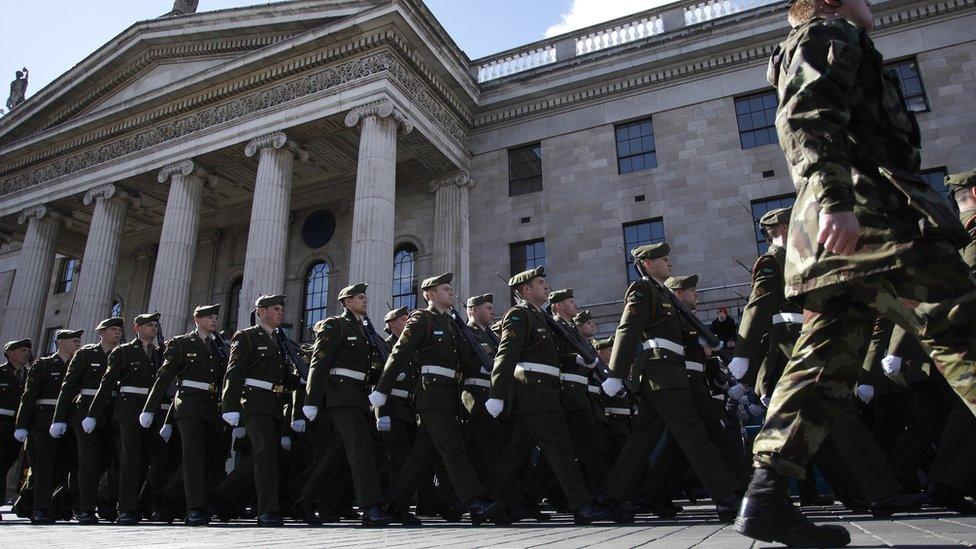
More than 3,600 members of the Irish defence forces took part in the commemorations
A number of former Irish presidents and prime ministers were special guests at the ceremony, alongside Northern Ireland's Deputy First Minister Martin McGuinness.
He said it was "a very special day".
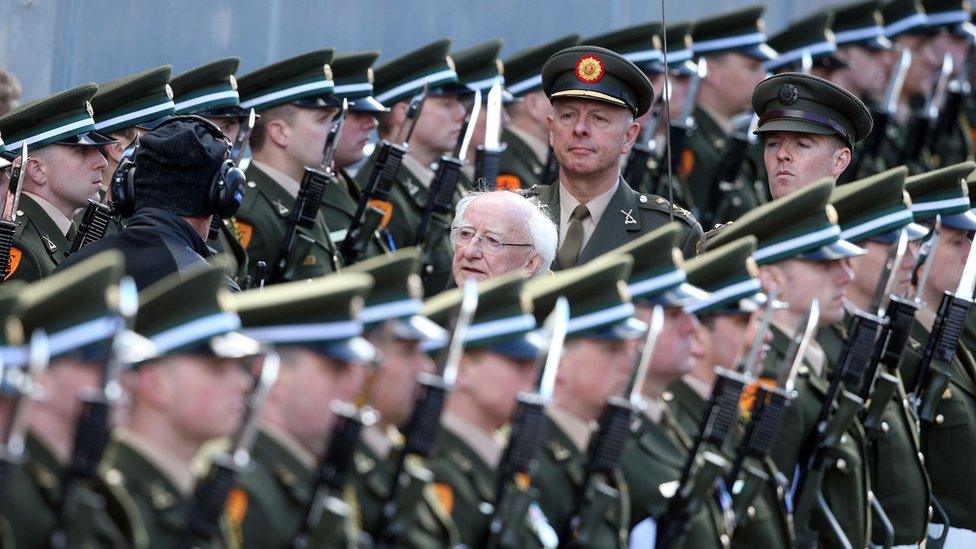
President led the ceremony at the GPO and inspected a guard of honour by the armed forces
"It'll be another 100 years before we witness the likes of it again," he added.
"To be here today and see hundreds of thousands of people on O'Connell Street remembering the sacrifices of those who led the rising was, I think, a very gratifying moment."
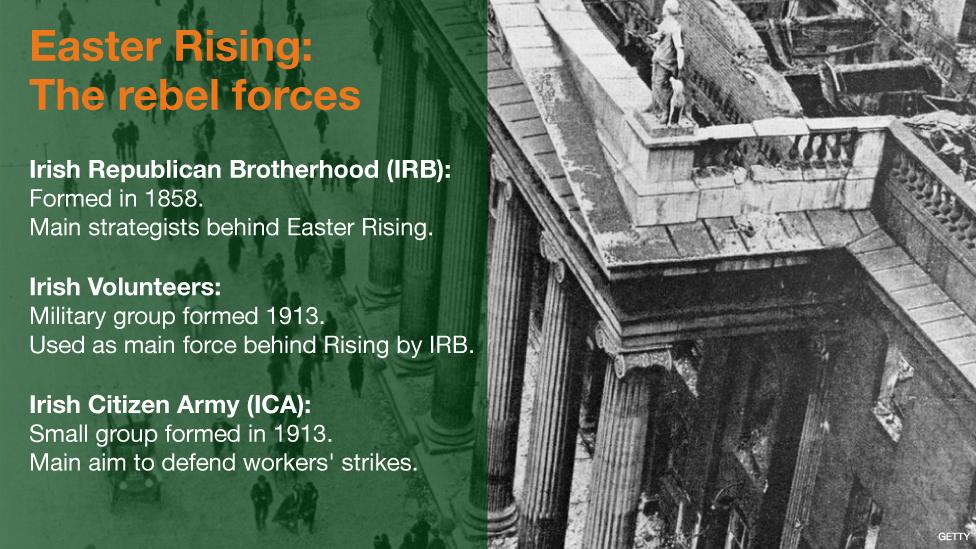
The Easter Rising was quelled within six days by British troops, but despite its failure it is seen as a significant stepping stone to the eventual creation of the Republic of Ireland and the partition of Ireland.
More than 450 people were killed and 2,500 injured during the fighting.
Those fatalities included 116 British soldiers, and a separate service to commemorate their deaths was held in Northern Ireland on Sunday.
Organised by the Royal British Legion, a wreath was laid on the grave of a teenage soldier from Greyabbey, County Down, who was killed in Dublin during the Easter Rising.
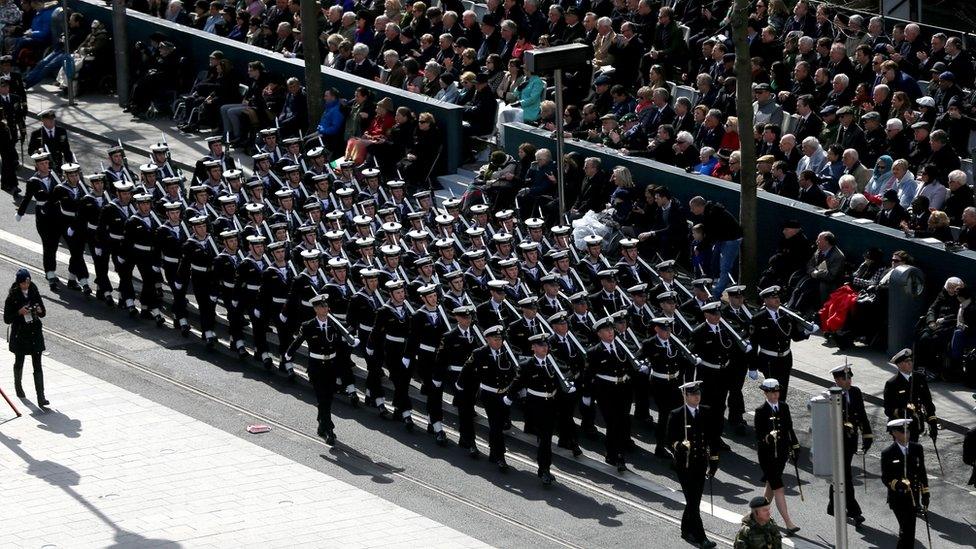
The Irish Naval Service joined the procession
In the aftermath of their surrender to British troops in 1916, 14 rebel leaders were executed by firing squad in the stonebreakers' yard at Kilmainham Gaol.
Two other rebel leaders were executed elsewhere - Thomas Kent was shot dead by firing squad in Cork and Roger Casement was hanged at Pentonville Gaol in London.
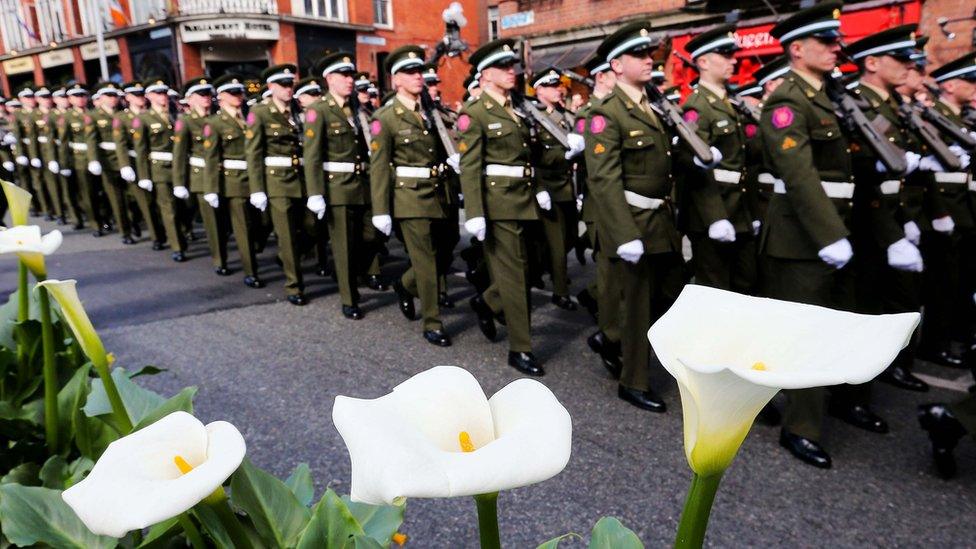
A huge amount of preparation had been put in ahead of the parade through Dublin's streets
More than 3,600 personnel from the Irish Army, Air Corps and Naval Service took part in the procession through Dublin, along with some members of the emergency services.
The military display culminated in a 21 gun salute in the grounds of the Royal Hospital Kilmainham.
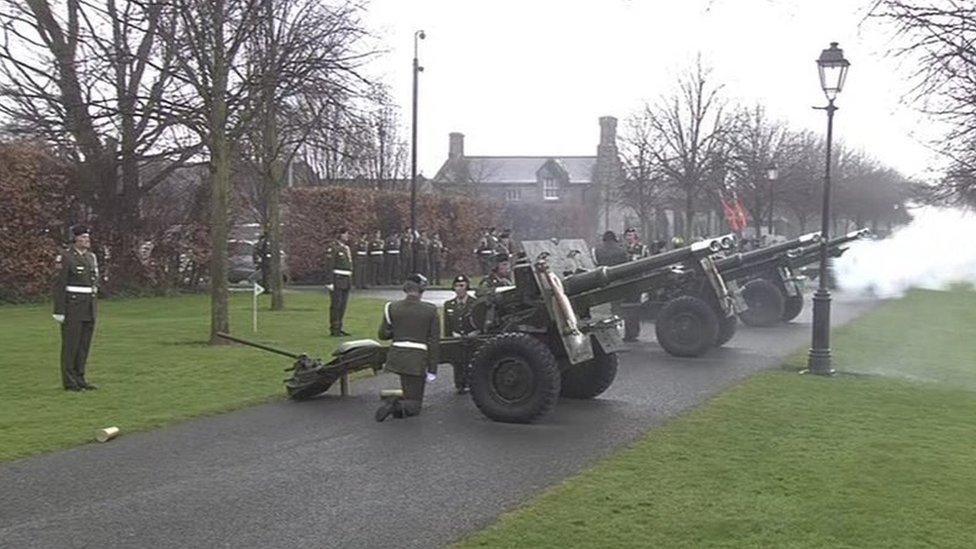
The Irish defence forces used weapons bought from the British Army in 1948 to carry out a gun salute
Wreaths were also laid at the Sigerson Monument, which is dedicated to all those who died during the rising, and the graves of Edward Hollywood and Peader Kearney.
Edward Hollywood weaved the first Irish tricolour flag in 1848 and Peader Kearney wrote the words to the Irish national anthem.
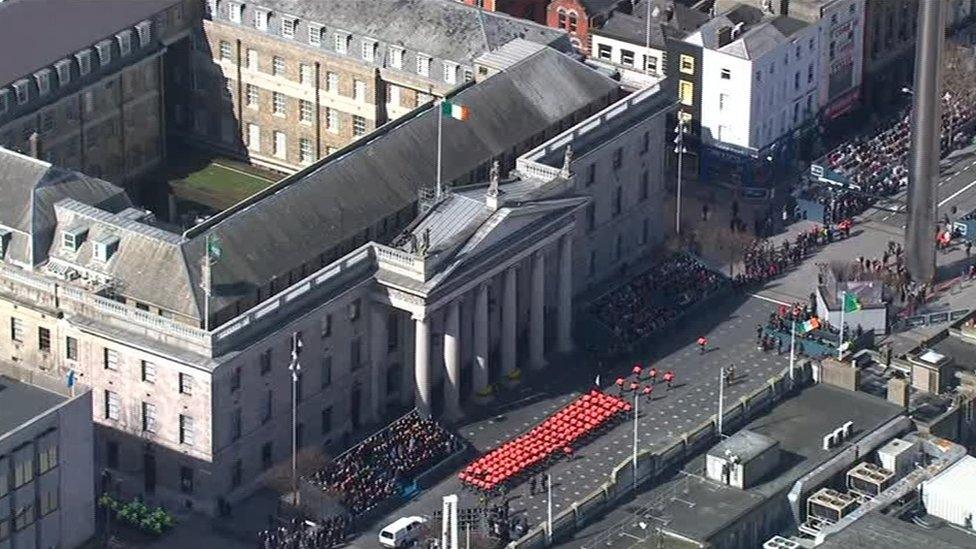
The GPO was left in ruins after the Easter Rising but was later rebuilt by the Irish government
The parade started at 10:30 local time, with hundreds of thousands lining the 2.7 mile route through Dublin city centre.
As well as senior politicians, a number of the rebels' relatives were invited to watch the ceremony from stands outside the GPO.
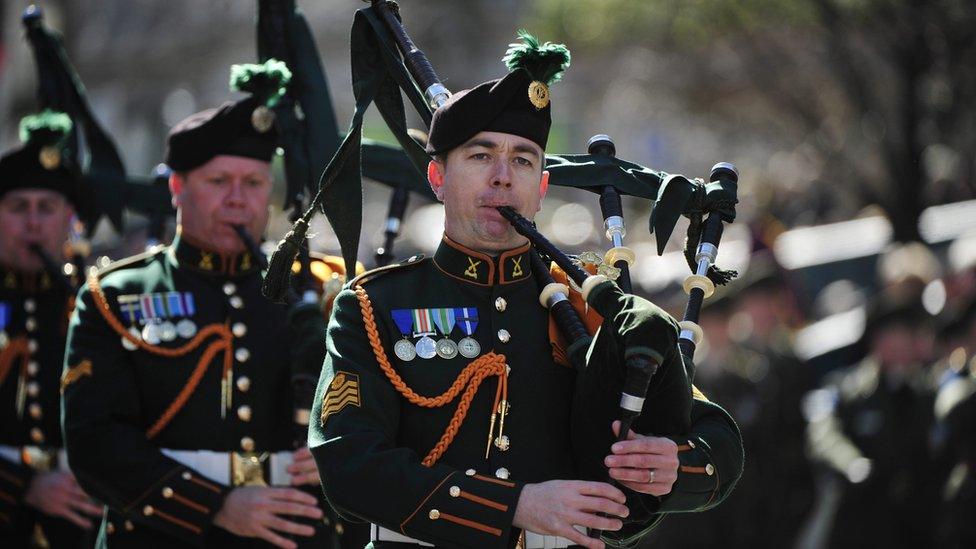
Bands from the Irish defence forces performed during the parade through the city
- Published27 March 2016

- Published27 March 2016
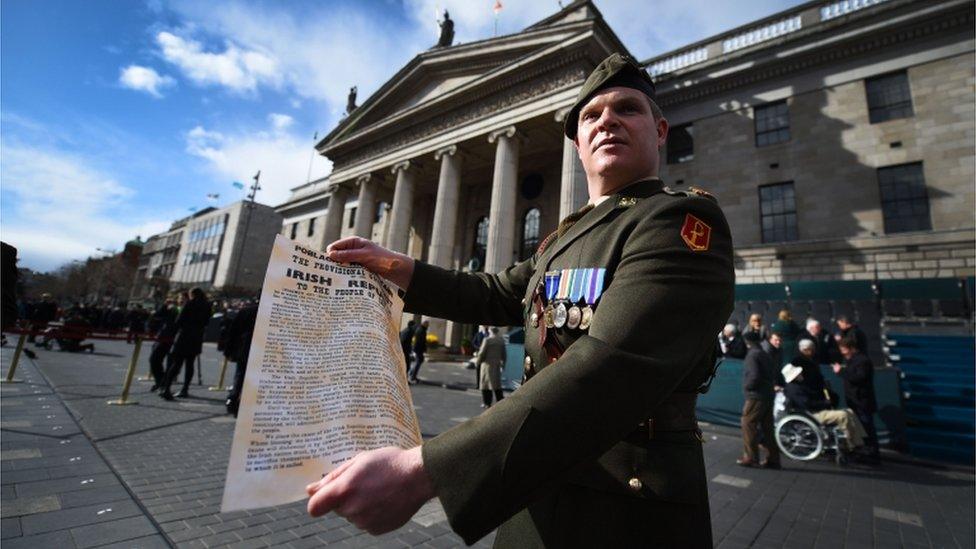
- Published27 March 2016
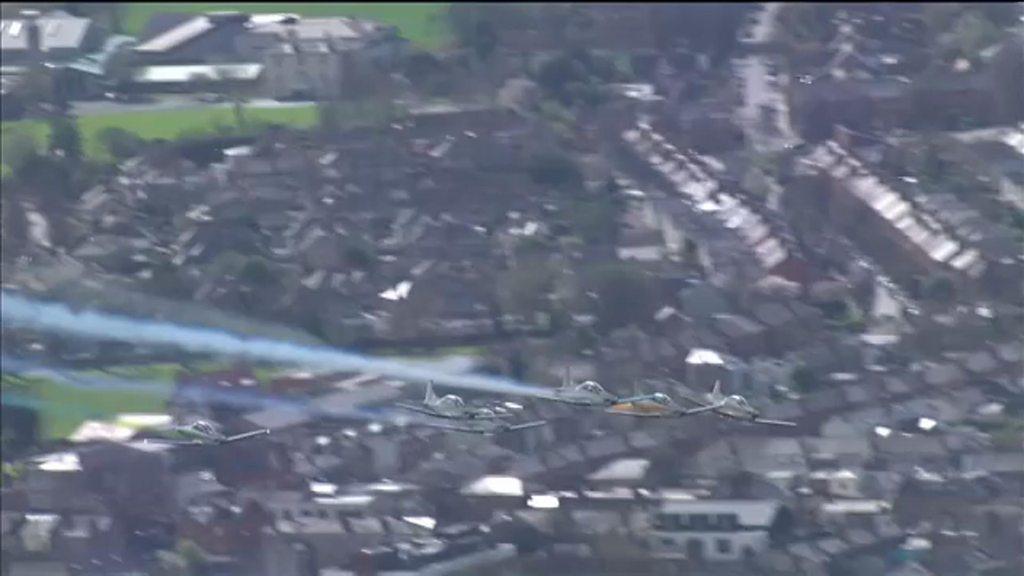
- Published27 March 2016
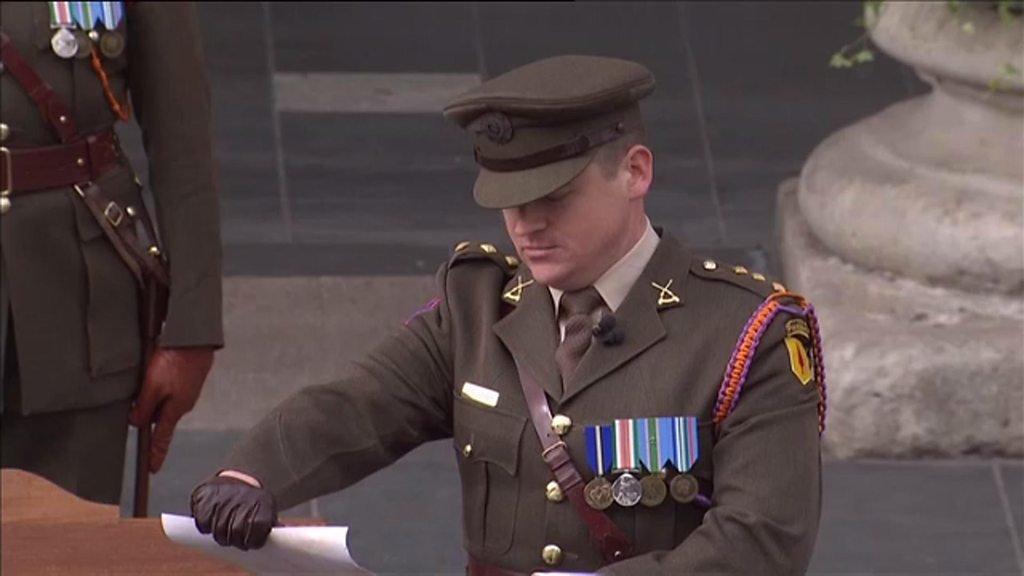
- Published27 March 2016
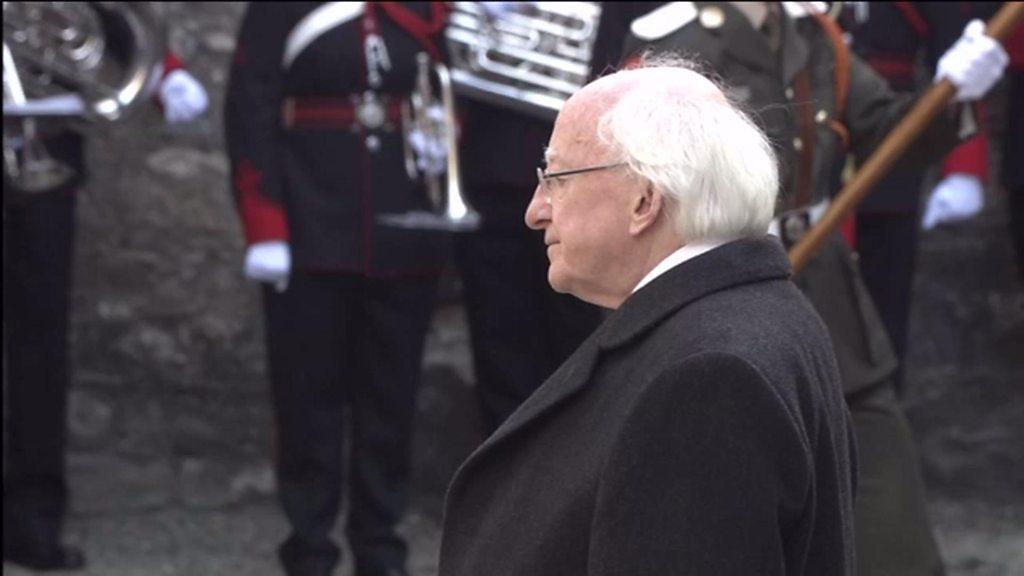
- Published26 March 2016
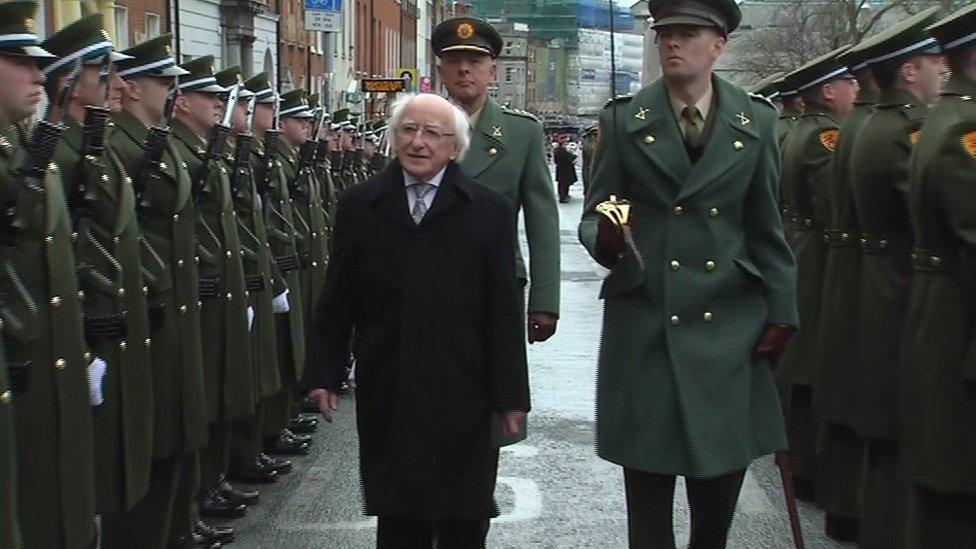
- Published26 March 2016
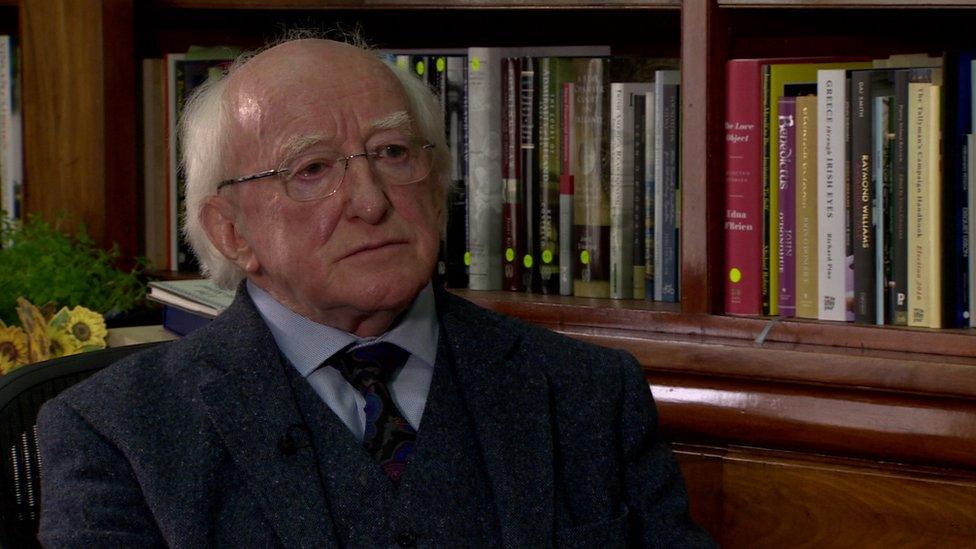
- Published23 March 2016
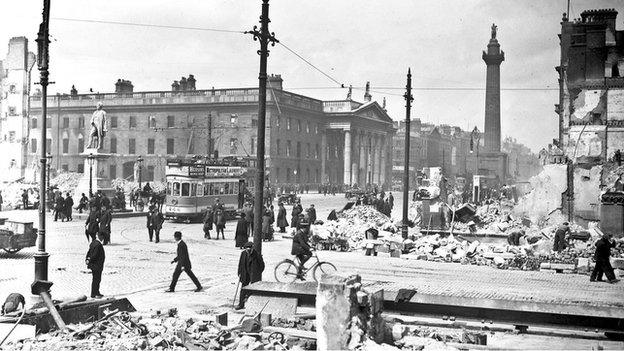
- Published23 March 2016
